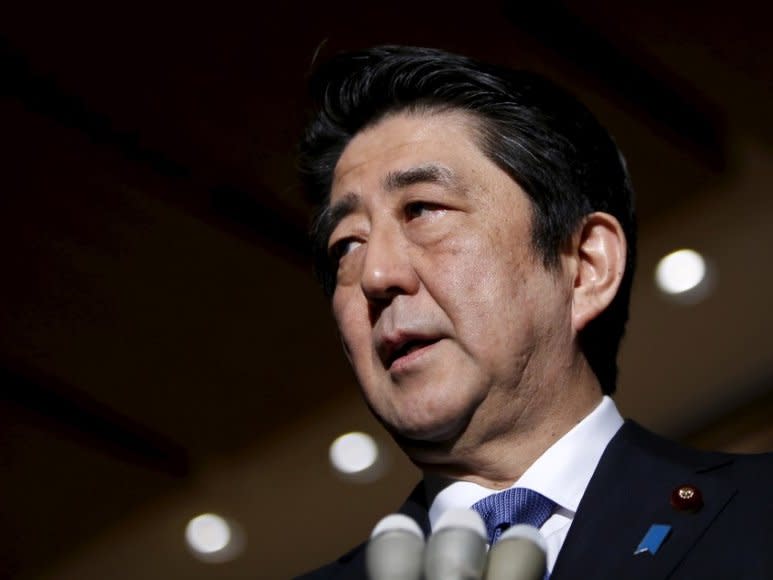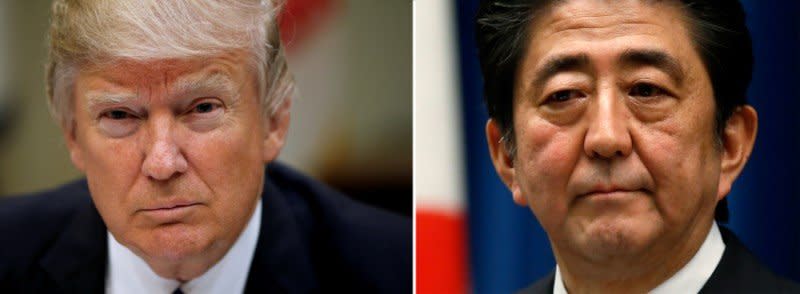Japan wants to bring the Trans Pacific Partnership back from the dead — even if it means leaving the US behind

Thomson Reuters
President Donald Trump spiked U.S. participation in the Trans-Pacific Partnership — a massive free trade pact five years in the making among countries representing 40 percent of the world’s economy — during his first days in office.
But now Japan wants to bring the trade pact back from the dead, even if it means leaving Washington behind.
Japanese trade officials told the Financial Times over the weekend that Tokyo is ready to carry TPP forward in essentially the same form it was in when Trump killed it.
“We will start talks on an eleven-member TPP, minus the US, at the [Asia-Pacific Economic Cooperation] meeting in May,” Japanese Finance Minister Taro Aso said at a recent event in New York.
The move signals that, even as the United States is in full retreat from free trade, many other countries are pressing ahead, even without U.S. leadership. Washington will have to grapple, though, with political fallout from detonating a trade deal that countries had worked on for years and which they’d manage to sell to skeptical audiences at home only after great pains.
While Trump’s decision to withdraw from TPP didn’t come as a surprise, the action itself sent shockwaves through the trade world and leaving the pact’s 11 other members — Australia, Brunei, Canada, Chile, Japan, Malaysia, Mexico, New Zealand, Peru, Singapore and Vietnam — in the lurch. Many thought that was the end of TPP, widely seen as former President Barack Obama’s hallmark legacy in Asia.
Initially, Japanese Prime Minister Shinzo Abe called the deal “meaningless” without Washington’s leadership and access to the huge U.S. market. But now his government is singing a different tune.
There’s several reasons for the about-face. First, Tokyo realized the deal could still net them some fruitful economic gains in medium-sized markets like Australia and Vietnam, especially since part of Abe’s economic strategy (called Abenomics) emphasizes boosting access to foreign markets to breathe life into the stagnating Japanese economy.
Second, Tokyo has probably prepared the ground to minimize fallout from the Trump administration. “There was a potential Trump could view [reviving TPP] as a slap in the face,” said Eric Altbach, senior vice president at consulting firm Albright Stonebridge Group and former U.S. trade official working on Asian issues. “Over the course of recent meetings with the administration, the Japanese probably were able to gauge level of U.S. comfort with an effort by Japan to revive TPP,” he told Foreign Policy.
Finally, there’s some geopolitical icing on the cake: The TPP still offers an alternative to the China-centric Regional Comprehensive Economic Partnership (RCEP), a less-stringent and watered-down trade pact for members of Association of Southeast Asian Nations (ASEAN). Japan might see in a revived TPP a way to limit China’s ability to dominate economic relations with its neighbors.

Thomson Reuters
But bringing TPP back from the dead will be easier said than done, in part because it will require a new draft, even if it recycles much of the language.
“At the end of the day you have to create a whole new legal text. You can’t just strike the United States out of it,” said Lauren Bosma, another trade expert with Albright Stonebridge Group. She said the slew of technical and legal aspects of trade agreements, painstakingly scrubbed line-by-line, preclude them from simply striking the United States from the document and calling it a day.
And reopening the text, even with the full TPP text to start from, could be an uphill battle. “”The more you reopen the text…you risk cascading sets of demands that destroy the entire agreement,” Altbach said.
Meanwhile, Trump’s grand plan to scrap multilateral trade deals in favor of bilateral ones could hit a big wall in Asia. After being the most aggressive voice pressing for tough reforms and concessions to get TPP done, Washington can’t really ask bilateral partners for more concessions, Altman said. On Friday, Aso hinted at Japan’s hesitancy to strike a bilateral trade deal after seven years of TPP wrangling with nothing to show for it.
While Japan sorts that out, the Trump administration may be warming up a bit to the kind of sprawling trade pacts that were so ill-treated during the campaign.
On Monday, U.S. Secretary of Commerce Wilbur Ross told the Financial Times he was open to the idea of a free trade deal with the European Union. The first attempt, the Transatlantic Trade and Investment Partnership, sputtered and all-but died after three years of negotiations, but Trump stopped short of withdrawing from it like he did TPP. That was by design, Ross said.
“Clearly at some point we need to do something with Europe,” he said.
NOW WATCH: 'Clearly we missed the mark': Pepsi just pulled this controversial ad
See Also:

 Yahoo News
Yahoo News 

